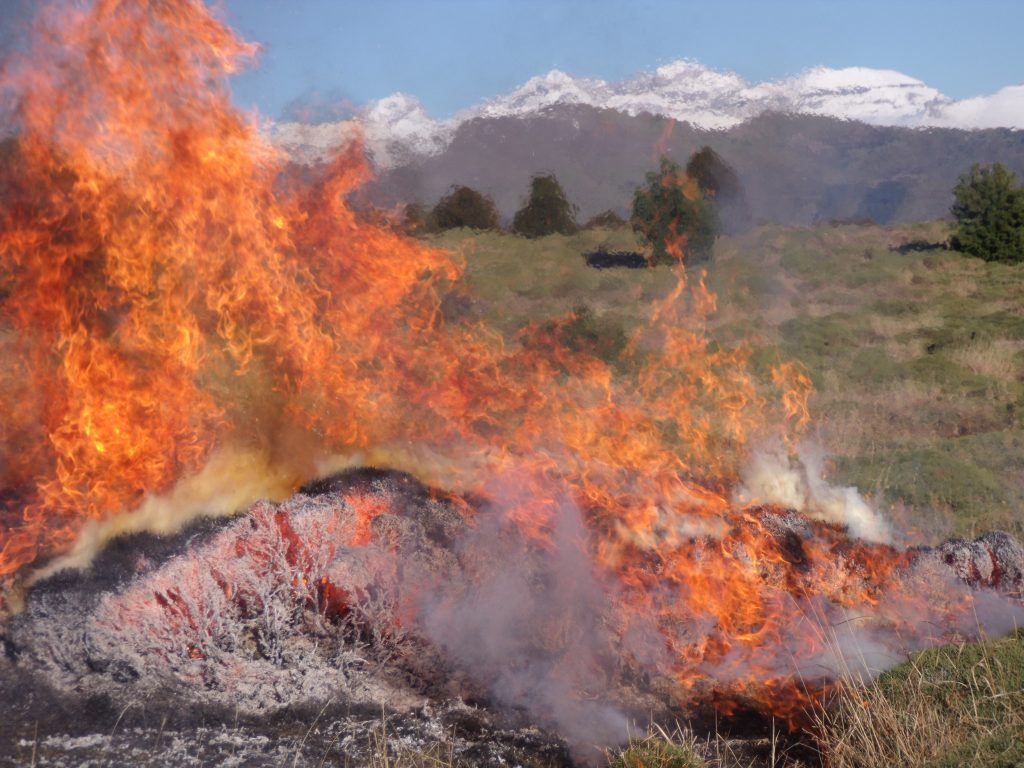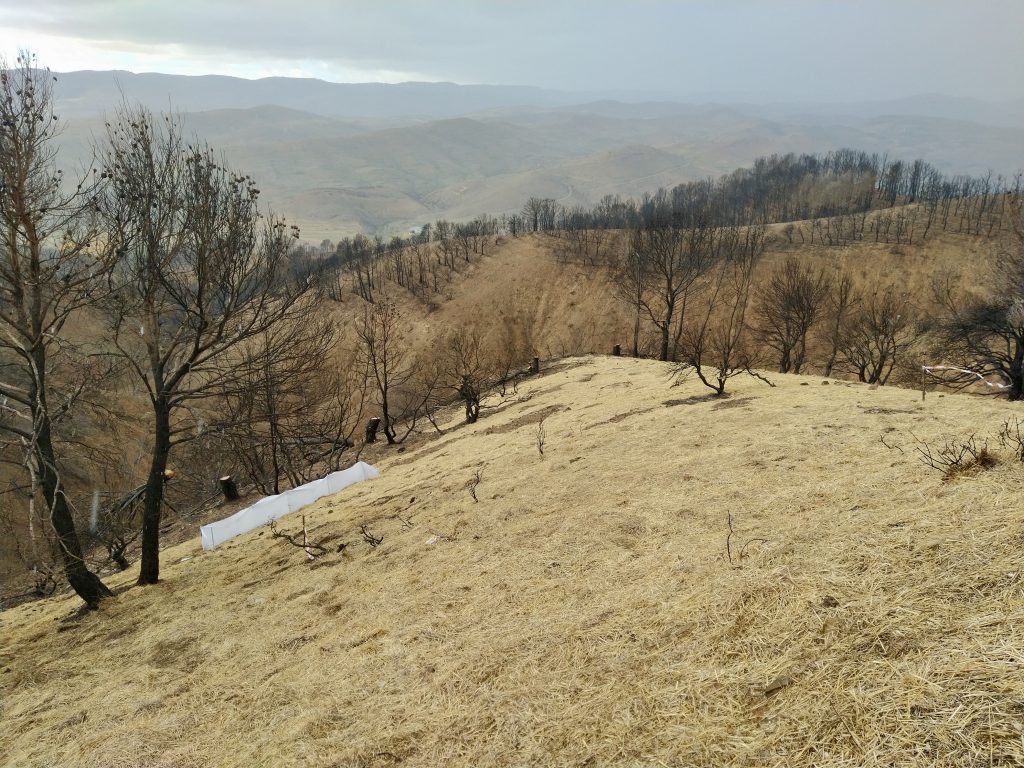Professor David Badía, Chair of Soil Science, professor at the Higher Polytechnic School of the Huesca Campus of the University of Zaragoza, researcher at the University Institute for Environmental Sciences of Aragón (IUCA), and member of the International Thematic Network FuegoRED, analyzes the causes, consequences, and possible solutions of wildfires during a summer marked by flames in Spain.
(Huesca/Zaragoza. Tuesday, August 19, 2025). Humans have used fire as a cheap and useful tool for deforestation, renewing pastures, eliminating weeds, or fertilizing agricultural soils for hundreds of thousands of years. “However, these days we are reminded of the destructive power of fire when it is out of control. Wildfires are currently the main cause of destruction of the natural environment in Spain, as in other Mediterranean basin countries,” notes David Badía Villas, Chair of Soil Science and professor at the Higher Polytechnic School of Huesca of the University of Zaragoza. “So far in 2025, it is estimated that some 375,000 hectares have burned in Spain, an area twice the size of the Pyrenees of Huesca,” he warns.
Why does the forest burn?
In addition to being an expert in Soil Science, Badía is a researcher at IUCA and a member of FuegoRED. From his extensive experience, he highlights climate as one of the key factors for the spread of fire: temperatures above 30ºC, humidity below 30%, and winds above 30 km/h. In other words, the so-called 30-30-30 rule facilitates both the ignition and, above all, the rapid spread of fire.
High temperatures and low humidity, such as those experienced in the latest summer heatwave—one of the longest on record—have dried out herbaceous vegetation that had grown abundantly during the previous rainy spring. This, coupled with the continuous recovery of forests over the last six decades, has increased the amount of fuel available. Vegetation that is both dry and fine, and loaded with volatile, flammable essences (such as pine needles), becomes a formidable fuel.
To climate factors must be added the quantity and continuity of fuel across the landscape. Once ignition occurs, continuity helps the fire escape extinction efforts, creating multiple wide fire fronts. For this reason, since climate is an uncontrollable factor, prevention should focus on creating or maintaining a mosaic landscape. Such landscapes, once shaped by humans through livestock grazing, using firewood for cooking and heating, or building terraces for hillside farming, “have been disappearing since the 1960s,” when forest cover began to steadily reclaim its space, Badía explains. He points out that “since then, Spain’s rural population has fallen from 35% to 10% of the total population.”

How to reduce wildfires?
Professor Badía points to two main courses of action. First, raising awareness among the population to prevent accidents, since, according to official data, only 20% of ignitions are due to natural causes (such as dry storms), while the vast majority are caused by negligence, accidents, or arson.
Second, achieving a balance between firefighting and land management. “The more effective we are at putting out fires, saving the forest in the short term, the more we postpone the problem for coming years. This is what is known as the ‘firefighting paradox.’ That is why we must revalue the services provided by rural areas and balance investment between firefighting services and forest management (the idea that ‘fires are put out in winter’),” Badía explains. It is estimated that extinction costs about €30,000/ha, while prevention may cost only 1–10% of that.
Spain already has management experiences that show possible ways to reduce fire risk while also revitalizing rural areas. These include mosaic landscape projects that integrate agriculture, extensive livestock grazing, and productive forests, such as Ramats de foc in Catalonia (with a label for meat and dairy linked to grazing); Mosaico Extremadura, promoted by the regional government, the University of Extremadura, and the EU; the Andalusian network RAPCA, which uses grazing as a firebreak; or the preventive grazing initiative developed by the Somontano region together with SEO/BirdLife, aimed at preventing fires near urban centers and improving infrastructures associated with firefighting, with sheep as allies. Other initiatives include biomass pellet production in Serra (Valencia), and social projects that seek to revalue the territory, such as the citizens’ platform Nuestros bosques no se olvidan in Teruel or Apadrina un olivo in Oliete.
After the flames
When a forest burns, the carbon stored in the vegetation (and even in the upper layer of forest soil) is released into the atmosphere as CO₂, a greenhouse gas. “Furthermore, fire impoverishes the ecosystem as a whole by volatilizing nitrogen, exporting nutrients through ashes, and increasing soil erosion with subsequent runoff events…,” stresses the Chair of Soil Science.
The sight of charred tree trunks after the flames are extinguished may lead one to believe that life has been wiped out. Mediterranean ecosystems, however, despite suffering a significant loss of fertility, possess a set of strategies that allow them to withstand such disturbances. Badía explains: “Among the burned plants are some capable of resprouting from the stump (such as gall oaks, kermes oaks, holm oaks, strawberry trees); other plants (pyrophytes), even if unable to resprout, germinate profusely after fire, such as rockroses and gorse; and some pines, like the Aleppo pine, have a large store of viable seeds in their cones which, after fire, with sufficient soil moisture, can germinate.”
That is to say, “some Mediterranean vegetation can regenerate relatively quickly, but only if the disturbance and other prior factors have not caused the degradation of the soil on which it grows,” warns Badía. He explains the process: “If the fire has eliminated vegetation and litter, turning them into ash, the soil is left unprotected against subsequent heavy rains and/or strong winds, which can worsen the problem. The first rains wash the ashes into streams, rivers, and reservoirs. This runoff of ashes and soil has not only local but also regional repercussions, as it worsens water quality, fills reservoirs with sediment, and shortens their lifespan. Soil loss (irrecoverable on a human scale, given its slow formation and rapid degradation) also reduces the regenerative capacity of vegetation, triggering a progressive desertification process. This is why emergency measures are applied in fire-affected areas: wattling, straw mulching, etc.”
For all these reasons, the researcher emphasizes, maintaining soil health is essential not only for recovery after fires but also for ensuring ecosystem resilience and curbing long-term desertification.


